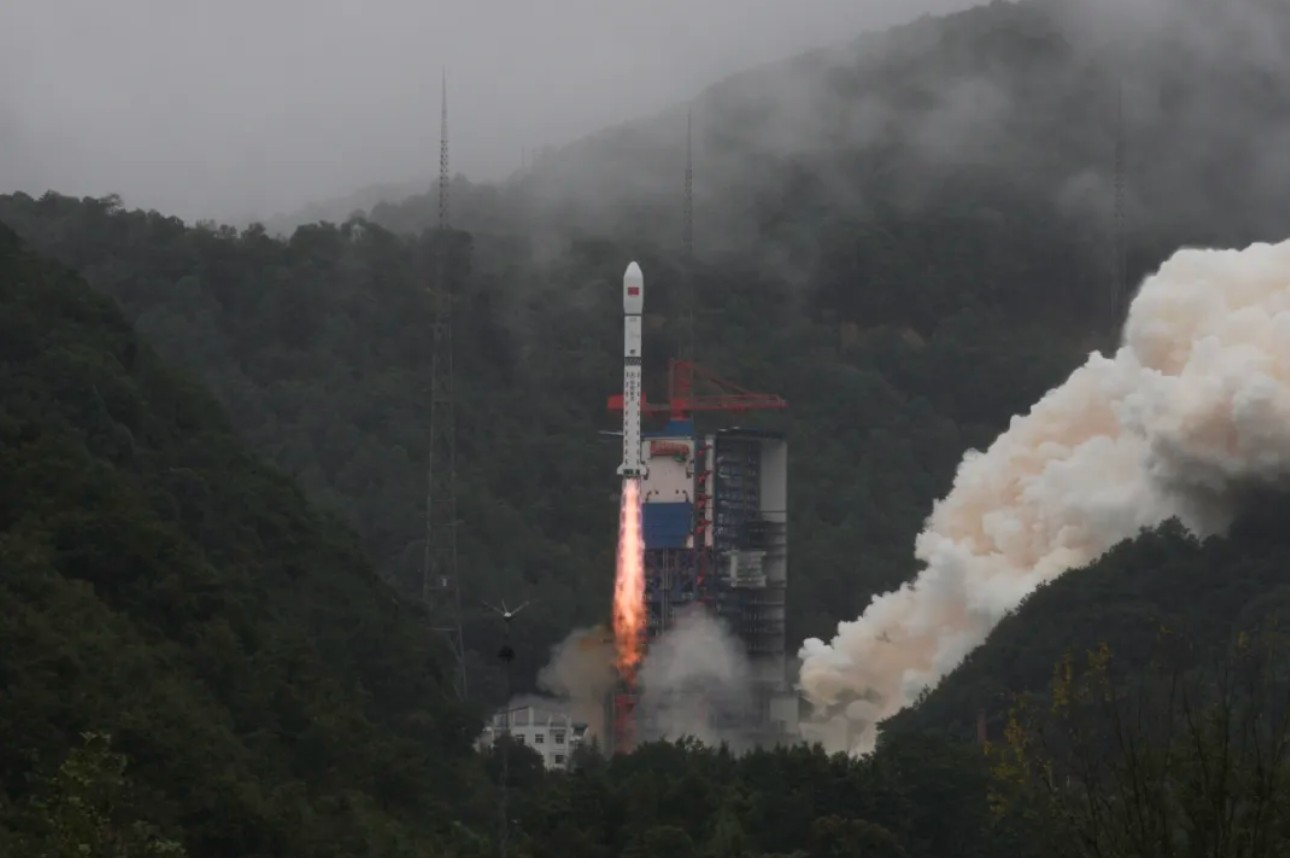
SYDNEY — A Long March 2D rocket sent a new set of experimental satellites into orbit late Sunday, capping an intense month of Chinese launch activities.
The Long March 2D lifted off at 11:00 p.m. Eastern Sept. 28 (0300 UTC, Sept. 29) from Xichang Satellite Launch Center in southwest China, with the launch vehicle climbing into dense clouds above the forested hill surrounding the spaceport.
The China Aerospace Science and Technology Corporation (CASC) announced complete success of the launch, revealing the payloads to be the Shiyan-30 (01) and (02) satellites. As is typical for Shiyan missions, no images and few details were released.
The satellites are primarily used for testing and verifying Earth observation technology, according to CASC, and were developed by the state-owned space giant’s own Shanghai Academy of Spaceflight Technology (SAST). Shiyan missions are usually described officially as for space environment detection and related technology experiments.
The satellites were later cataloged by U.S. space domain awareness teams in roughly circular 590-kilometer-altitude orbits inclined by 35 degrees.
Shiyan missions are typically opaque, but outside analysts believe Shiyan satellites are used to trial new systems such as sensors, communications subsystems and environmental instruments, forming part of China’s efforts to validate new space technologies in orbit.
Satellites in the series appear to have been used for a range of purposes, including technology demonstrations, space environment monitoring, electronic intelligence, remote sensing, space situational awareness and space operations such as rendezvous and proximity maneuvers (RPO).
Recent Shiyan activities
Many Shiyan satellites operate in low Earth or near-polar orbits, though a number have headed to geosynchronous orbits, including the possible inspector satellites Shiyan-12 (01) and (02). Shiyan-10 satellites, meanwhile, entered Molniya orbits.
Shiyan-12 (02) was recently assessed to have approached and likely imaged the Space based infrared system (SBIRS) GEO 6 spacecraft, designated as USA 336, in the geostationary belt. The recently-launched Shiyan-29, has meanwhile been tracked orbiting around 800 km above GEO with an exceptional inclination of 28.5 degrees. This makes characterizing or imaging the satellite challenging, with the purpose of the mission unknown.
The launch was the 100th of the Long March 2D rocket, making it only the second Chinese launch vehicle to reach triple figures for launches, following the Long March 3B rocket.
It was also China’s 10th launch of September, marking one of the most active calendar months for Chinese spaceflight. Missions included Shiyan-29, a Ceres-1 solid rocket launch, a set of Yaogan military triplets and the separate Yaogan-45 mission—a large Earth observation spacecraft and China’s first such satellite in medium Earth orbit—and a series of launches for the Guowang and Geesatcom constellations and China’s Fengyun weather satellite fleet.
Sunday’s launch was China’s 59th orbital launch attempt of 2025, which includes a single launch failure, being the loss of a Zhuque-2E rocket from commercial outfit Landspace in August. Upcoming missions include a Long March 8A launch from the Hainan commercial spaceport and the second Gravity-1 solid rocket from Orienspace, with both currently expected around Oct. 10.



